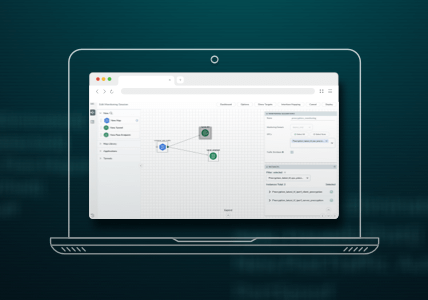De-Risking New Service Provider Technology Deployments – The Triple Challenge of Network Transformation
Hello Telecom professional! Welcome to this extended series of blog posts that’ll take an in-depth look at the Triple Challenge of Network Transformation which operators are currently experiencing. We’ll examine how subscriber trends and market forces are pushing operators to transform their network – and the ensuing resource crunch that will occur. We’ll also take a look at how a Visibility Fabric can help to de-risk the deployment of several of these new technologies – avoiding the resource crunch and helping to de-risk the rollouts.
We started the conversation about the Triple Challenge of Network Transformation back in September, since then we’ve seen several industry new stories that validate our thought leadership & commentary – related to how the Triple Challenge is affecting the Service Provider’s ability to deploy new technology in an expeditious manner and with agility. As we look forward to 2015 and Mobile World Congress our approach to solving this dilemma is now more relevant than ever. So, let’s get started with a video interview as an introduction that’ll quickly explain what the Triple Challenge of Network Transformation is all about.
And the first post in this series, an updated introductory blog entry…
Operators have always faced a slew of new technologies to roll out, but this time around there’s a difference. In the past, operators have been able to deploy new technologies in a series, one after another. Due to the interdependency of current new technologies, they can no longer be deployed in a series. The deployment of one new forces the deployment of another new technology and so on until all three new technologies are deployed. This series of blog entries will explain the three technologies and their interdependencies – highlighting why it is bad from the operator’s perspective and exploring ways to overcome the resource crunch that will become evident.
What is the Triple Challenge and why will it occur?
The Triple Challenge defines the operator’s predicament to be able to deploy next-generation technologies, which are made up of:
- IP Voice
- VoLTE – IR.92 primarily for Mobile carriers; PLMN
- VoWiFi – applicable to Mobile, Fixed or Cable providers; PSTN, PLMN & MSO
- VoIMS – as the underlying technology to all modern day IP Voice implementations
- High Speed Transport Pipes
- Multiple bonded 10Gb
- 40Gb
- 100Gb
- Carrier Network Virtualization
- Traditional server virtualization
- Software-Defined Networking
- Network Functions Virtualization
The operator is faced with a number of decisions to make:
- Virtualize the core first, then deploy VoLTE as a virtualized network function OR deploy VoLTE as a function on their traditional network since the network is already in place?
- Upgrade the core beforehand due to worries about DiffServ, MPLS transmission or QoS issues in general OR wait until the bandwidth requirements placed upon the 4G/LTE RAN force the move of voice services from the existing circuit switched 2G RAN?
- Upgrade core routers in anticipation of rising RAN traffic OR virtualize the core routing network elements first?
It appears that there is no correct answer to whether the horse or the cart goes first. With this level of uncertainty and all-encompassing network transformation, there is only one constant – the need to be able to monitor the new technologies completely and comprehensively. The operator be able to make sure the network changes involved are working in the way that the network equipment manufacturer has promised during the design phase and are satisfying expectations when turned up and deployed. It is said that the person who is wrong is the person who can’t prove they are right, therefore monitoring of packets-in-motion greatly helps to add to the legitimacy required in the conversation between the operator and the NEM when deployments of new technology don’t go to plan.
Here we see a graphical representation of the resource hit and how one technology causes the parallel roll out of the other “Triple Challenge” technologies:
 This is due to the three technologies being interdependent; deploying any one will result in either of the other two technologies also being deployed. This often leaves the operator with too few resources to deploy the new Triple Challenge technologies. Monitoring can play a great part in de-risking the deployment of these three new technologies, and help find the correct needle in the correct haystack, whilst disqualifying many false positives.
This is due to the three technologies being interdependent; deploying any one will result in either of the other two technologies also being deployed. This often leaves the operator with too few resources to deploy the new Triple Challenge technologies. Monitoring can play a great part in de-risking the deployment of these three new technologies, and help find the correct needle in the correct haystack, whilst disqualifying many false positives.









